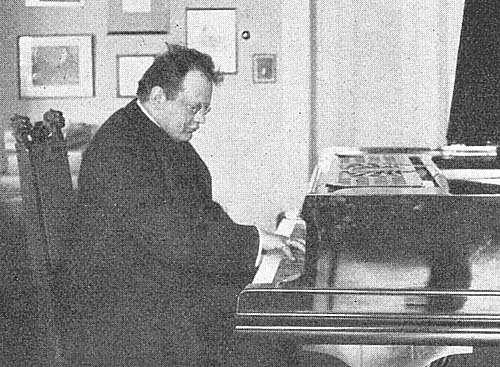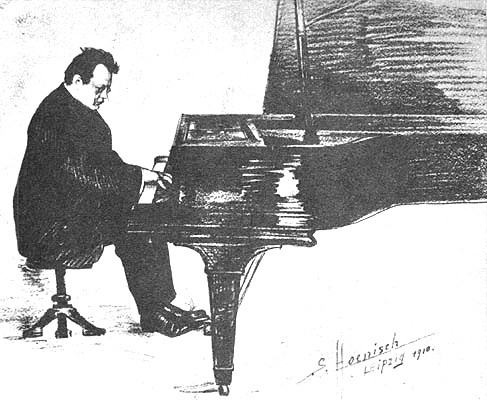

Was he a real piano virtuoso? He could, unlike Bach or Mozart, not play his own Piano Concerto (opus 114) and never played his Telemann- or Bach-Variations in concerts. But there are numerous accounts of him playing his Beethoven-Variations for two pianos opus 86. These variations are also no easy stuff to play! In his Wiesbaden-time, he also studied many piano works by Busoni, Beethoven and Brahms. He was indeed a considerable piano player!
One of his duo-players in the Beethoven variations (and also in the introduction, Passacaglia and fugue opus 96) was Willi Jinkertz (1878-1943), who published a book about Reger ("Mit Reger an zwei Flügeln"). In this book, he is giving account of Reger's special way of playing the piano: Reger had access to all kind of colouring, unheard of at the time. He mentiones especially typical flute-like Staccato-effects, and the crystal-clearness of his playing. In the last years of his life, Reger seems to have played nearly only Bach in solo-concerts. Jinkertz names Reger "the pianoplaying genius, but not the born pianist" (page 17). As these are first-hand observations acquired from numerous concerts given together with Max Reger, it is certainly a contribution to the portrait of Reger as piano player.
Jinkertz also provides us with an insight in the way Reger wanted his own works to be played (page 20-21). The main points are:
The Dutch pianist Willem Andriessen (my father's teacher) met Reger in Amsterdam (March 1916) and also explicitly mentioned in his memoires the glass-clear toucher of Reger. Reger never got tired that evening from playing his, then newly written, Telemann-variations opus 134 until deep in the night. Andriessen also noticed that playing was not Reger's first commitment: while playing his own music he seemed to be rather busy with other things in his head.
To all contemporary accounts, he played the piano with a hitherto unknown tenderness and clarity. The Welte - Mignon recordings of 1905 even tody reflect some of the qualities of Reger's piano playing. The newest release (Tacet, May 2006) of these recordings is a must for everyone interested in this field.

The photographs here were taken in Reger's music-room in Meiningen by S. Hoenisch (Leipzig), who also pencilled the sympathetic drawing in 1910.
Reger is looking kindly, almost happily. I know of no other photograph which so clearly shows his tenderness in playing and his total dedication to music.
A virtuoso? Maybe not, but a piano playing Genius with enormous possibilities? Yes!
